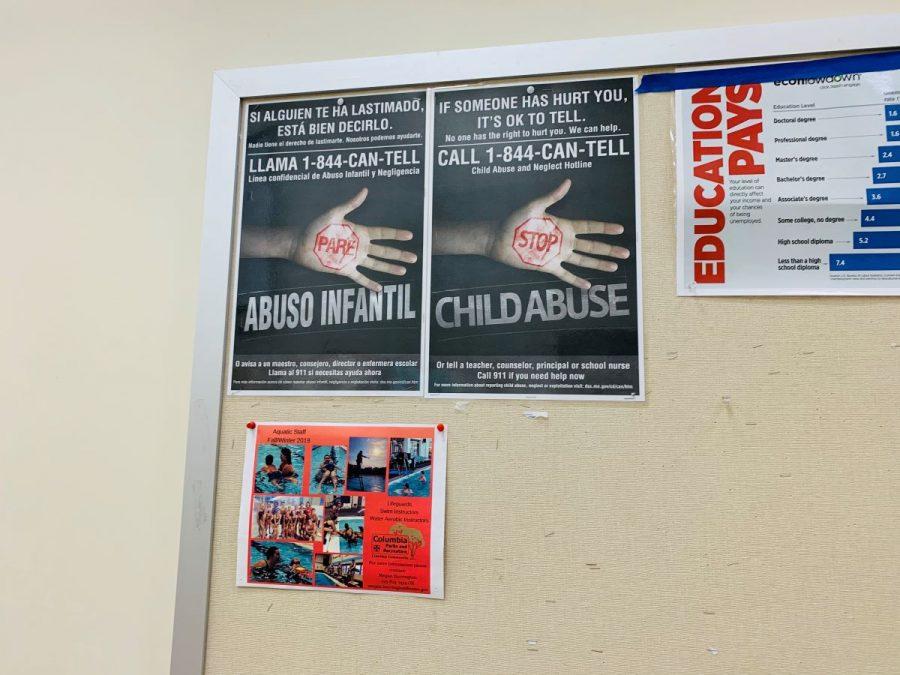Countless anti-bullying posters lined the walls of our elementary and middle schools, re-hammering stale slogans already plastered to the back of our brains. “Don’t be a bully.” “Don’t be a bystander.” “Tell an adult.”
Years of anti-bullying lessons have caused an oversaturation that ultimately does nothing to solve the problem. Bullying is a serious issue, but we should question if the programs in place are as effective as the creators of these programs say. The current curriculum stresses two messages the most: talking to an adult and not being a passive onlooker to victimization.
The original claims about the benefit of witnesses intervening cite an article from 2001, where researchers observed 58 6-12 year olds standing up for the victim in bullying and saw if their intervention helped stop the bully. The researchers found that 57 percent of the mediations were successful; however, these observations were only short term. They judged if the mediation worked or not in the few seconds after it occurred, but the study does not go any further. Because of this short time frame, one can’t gauge if there were lasting impacts, what truly matters.
Not only should anti-bullying programs say that mediating conflicts work, but these programs should dive deeper into why onlookers don’t stand up for the victim. Also, a lot of it has to do with what type of harassment is going on. A 2019 study called “Would I be helped?” studied CCTV footage from the United Kingdom, the Netherlands and South Africa with physical conflicts. The researchers found that in nine out of 10 conflicts, passerby interfered in the situation.
This is different from verbal abuse, which is the most common form of bullying, because in a physical fight, someone is getting hurt and the spectator feels a visceral need to intervene and break it up before it gets ugly. With verbal bullying, most of the pain is inside the person, and there is less of a reaction by watchers because it’s not something clearly visible happening. Also, what people perceive of the severity of the abuse is also a part of whether people step in or not. One person might perceive it as playful teasing when it is actually insulting, so there is a bit of subjectiveness with verbal abuse.
There are also very complex reasons why witnesses do or do not step in, and these programs should look into this more by incorporating psychological research into their reasons why kids don’t stand up for the victim instead of using generalizations like, “I don’t know how to help.” The current system does a great job with outlining the reason why, but I think what is lacking is information about how social standing is also a factor.
In a 2013 study titled, “Bystander Motivation in Bullying Incidents: To Intervene or Not to Intervene?” researchers studied the motivations behind why a kid might not try to stop the situation.
The researchers found witnesses were more likely to intervene if the witness viewed the victimization as harmful, and would not if they had a fear of being victimized, or there was “audience excitement.” It also found that if the bystander was a friend of the victim, they were more likely to stand up for them. If the bystander had a high social rank, they had a bigger motivation to intervene, and the study stated that “girls stand up for other girls,” and they were more likely to intervene than boys.
Anti-bullying campaigns also misinform children that they are entitled to a tormentor free world by saying things like ”Let’s stop bullying forever.“ Those kinds of phrases teach the child that there can be a world without jerks, which there cannot be, and that does not prepare them for the harsh realities of middle school. Middle school is where the protective censorship bubble of elementary school is popped, and the ugly and gritty real world shows through. With this kind of message, the transition can be very hard for kids. Instead, these programs should stress that the world isn’t perfect, and there isn’t going to always be adults and teach students how to calm down situations themselves.
By teaching kids to “tell an adult,” it says that students of all ages can’t deal with victimization on their own, and that they need a savior in the form of a teacher to deal with issues. This kills the self-confidence needed to resolve the situation on their own, which kids need to learn how to do to survive in the adult world.
Interceding by adults can make situations worse, with a psychological concept called triangulation. Triangulation is where an outside intervention causes two of the parties to start fighting with more fervor to get the “judge” on their side. According to Izzy Kalman from Psychology Today, a good example is a sibling rivalry.
“Once the parents get in the middle, playing detective, judge and punisher, each child desperately wants the parent on their side,” Kalman said. The kids become prosecuting attorneys against each other, trying to get their sibling in trouble with the most important person in the world to them. The loser of the judgment becomes angry at the parent, and seeks the next opportunity to create a fight in the attempt to get the parent on their side against their sibling. The winner also seeks to create further fights to keep the parent on their side. Thus, the cycle of fighting never ends.”
Triangulation can cause the victim to be called a “Snitch,” deterring a victim from contacting school authorities because this moniker can be the kiss of death in one’s social life because of reduced trust from the victim. It has been a scenario in movies, books and TV shows, but these campaigns don’t seem to put the concept into consideration.
Additionally, interventions can only go so far. Sometimes the mediations go from the principal or teacher telling the bully, “Don’t do it again” in elementary school or in middle school and in high school In School Suspension (ISS) with the zero-tolerance policy that CPS upholds. The question is, does ISS or just telling the offender to stop really incentivise the bully to quit, or does the person just do it again, but sneakier and threatening the victim so they don’t get caught?
Usually, kids do not tell the school authorities, according to the National Bullying Center. Anti-bullying campaigns target this problem, but in reality, it’s as if the campaigns forget the entire concept of revenge.
If there is an aggressor and a victim and the victim “snitches” on the aggressor, the can easily tell who sold them out. After the punishment is over, like detention, the bully comes back for revenge and torments the victim with more fervor.
Also, interventions just focus on bringing the hammer down on the offender and don’t really look at the emotional trauma of the victim. What schools should do after the incident is try to console the child and teach them how to resolve the conflict themselves if it happens again because that better prepares kids for the real world.
These campaigns should focus on teaching students how to control their emotions to avoid escalating conflicts and teach kids social skills that they can use to calm down instead of venting their anger verbally or physically and stay calm. Also, the programs should stress preventive measures and should focus on how students can resolve situations on their own. We should question the efficacy of some of these programs and start to look towards solutions that have a greater impact than the current programs.
There is an anti-bullying campaign in Finland called KiVa that focuses mostly on how to intervene effectively through role-playing activities and videos with students K-12 and explaining more in depth on how bystanders are motivated. It proposes a better way of mediating conflict, with three teachers ending the conflict and then having systematic meetings with the bully and victim after for a period of time, while also focusing on what to do when somebody is harassed. The program was tested in Italy, and it brought down reports of incidents by 40% in high schools.
These types of campaigns are necessary for the well being of students in K-12. The social media and cyberbullying campaigns in CPS have been great, but they need to be updated with social media platforms that are relevant now and a slightly less time consuming course than the Digital Citizenship activity.
Instead of having zero-tolerance policies that cause bullying to be under the radar, schools should focus more on the individual by looking deeper into what causes victimization and factors that might cause a person to make fun of someone else or someone to mediate a conflict to make a better school environment.
How do you think anti-bullying should be taught? Let us know in the comments below.























































































Desmond Kisida • Jan 30, 2020 at 9:54 am
I feel like adults must get closer and on the same level as students when addressing bullying. “Bullying is bad…m’kay” doesn’t do anything. And I think students are the ones that need to talk about bullying to other students, not teachers.
Meghan Thomas • Jan 29, 2020 at 10:50 am
I love how this discusses points that are rarely mentioned in the modern world. Although we have implemented these protocols and programs, just how useful are they? In my opinion this piece perfectly describes how our anti-bullying slogans just aren’t enough to fix the issue.
Emma Kimchi • Jan 28, 2020 at 5:17 pm
I think that the term “bullying” is thrown around way too often. People now call just about anything bullying and I think that because of this people who actually suffer from bullying are not getting the help that they need.